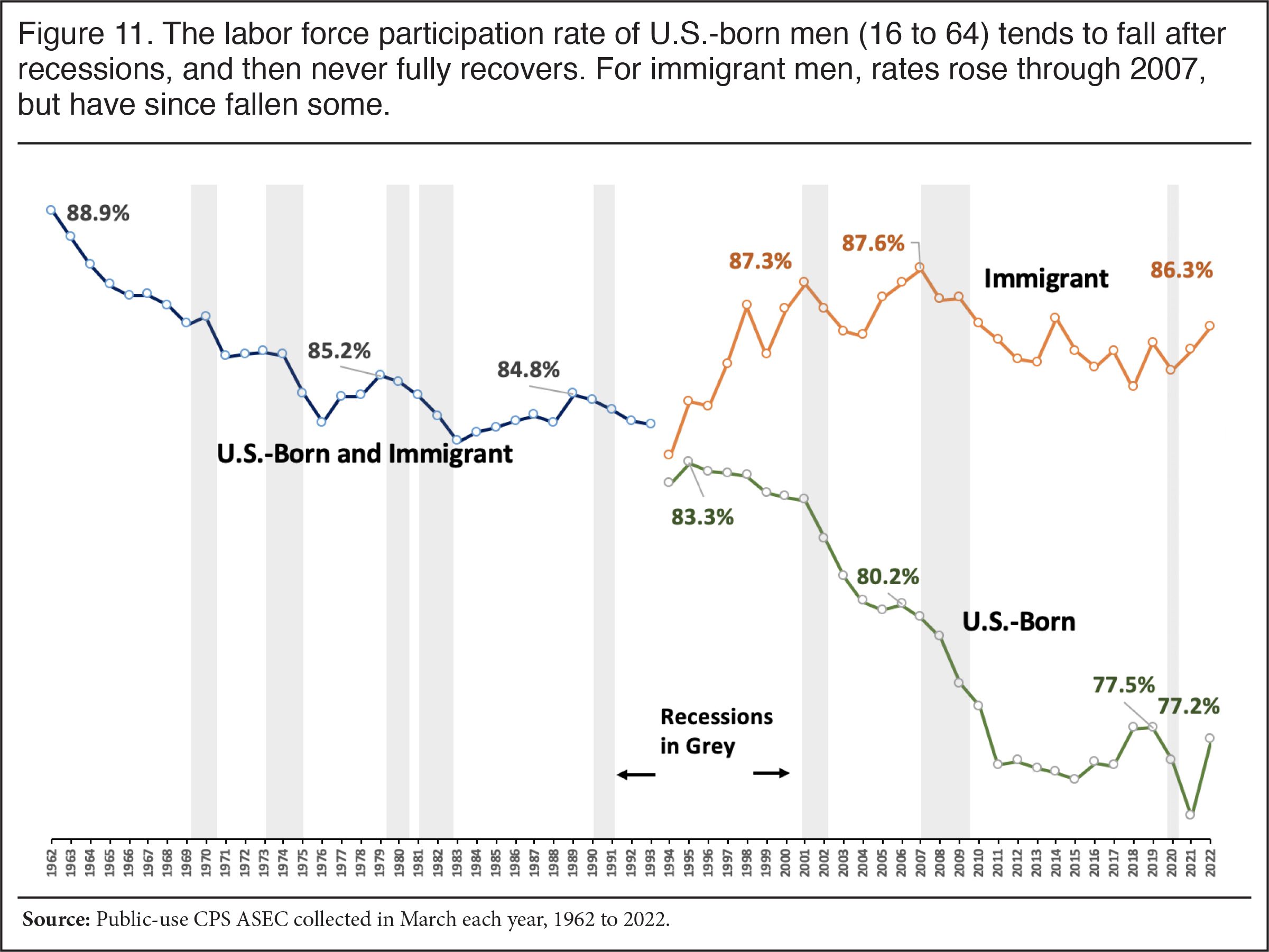The rate of participation of American-born working-age men in the U.S. workforce has fallen dramatically over the last several decades, according to a new report by the Center for Immigration Studies.
Overall, from 1960 to 2023, the percentage of U.S.-born men between 16 and 64 engaged in the workforce (either actively working or looking for work) dropped from 88.7% to 77.5%.
In the subcategory of men with at least a four-year degree, the percentage dropped just over 5%, while the decline was steeper for working-age men without a bachelor’s degree. In 1960, 88% of American-born men with no four-year degree were actively engaged in the workforce. By 2023, that number had fallen to 71.4%. Among those with only a high school education or less, the participation rate plummeted from 88.4% to 67.1%.
However, the share of labor participation among immigrant men has grown since 1980, bucking the trend exhibited by American-born men. Overall, not accounting for education, 84.6% of migrants were engaged in the workforce in 1980. That figure rose to 86.6% in 2023.
Of the more than 164 million workers — both men and women — in the U.S. workforce in 2022, 29.8 million were immigrants, according to U.S. Department of Labor statistics. That is about 18.1% of the workforce, up from 17.4% in 2021. Hispanics comprised nearly half of the foreign-born labor force in 2022, while Asians accounted for about a quarter.
“It is likely that many factors have contributed to the fall-off in labor force participation, including declining wages, prior criminal convictions, ease of access to welfare and disability programs, competition with immigrants, and changing values and norms about the importance of work,” reads the CIS report.
The report suggested that policymakers and the business community have been historically unwilling to deal with such issues because of the ample immigrant labor, both lawful and unlawful, that is available in the United States. It further noted that drawing more working-age U.S.-born men and women “into the labor market will certainly not be quick or easy.”
“It will involve the difficult task of reforming our welfare and disability systems, combating the opioid and mental health crises, improving job training, and reexamining our approach to globalization. Allowing wages and benefits to rise, partly by reducing immigration, is almost certainly a key part of the solution. Perhaps most challenging, we will need to figure out how to re-instill the value of work,” the report reads.







